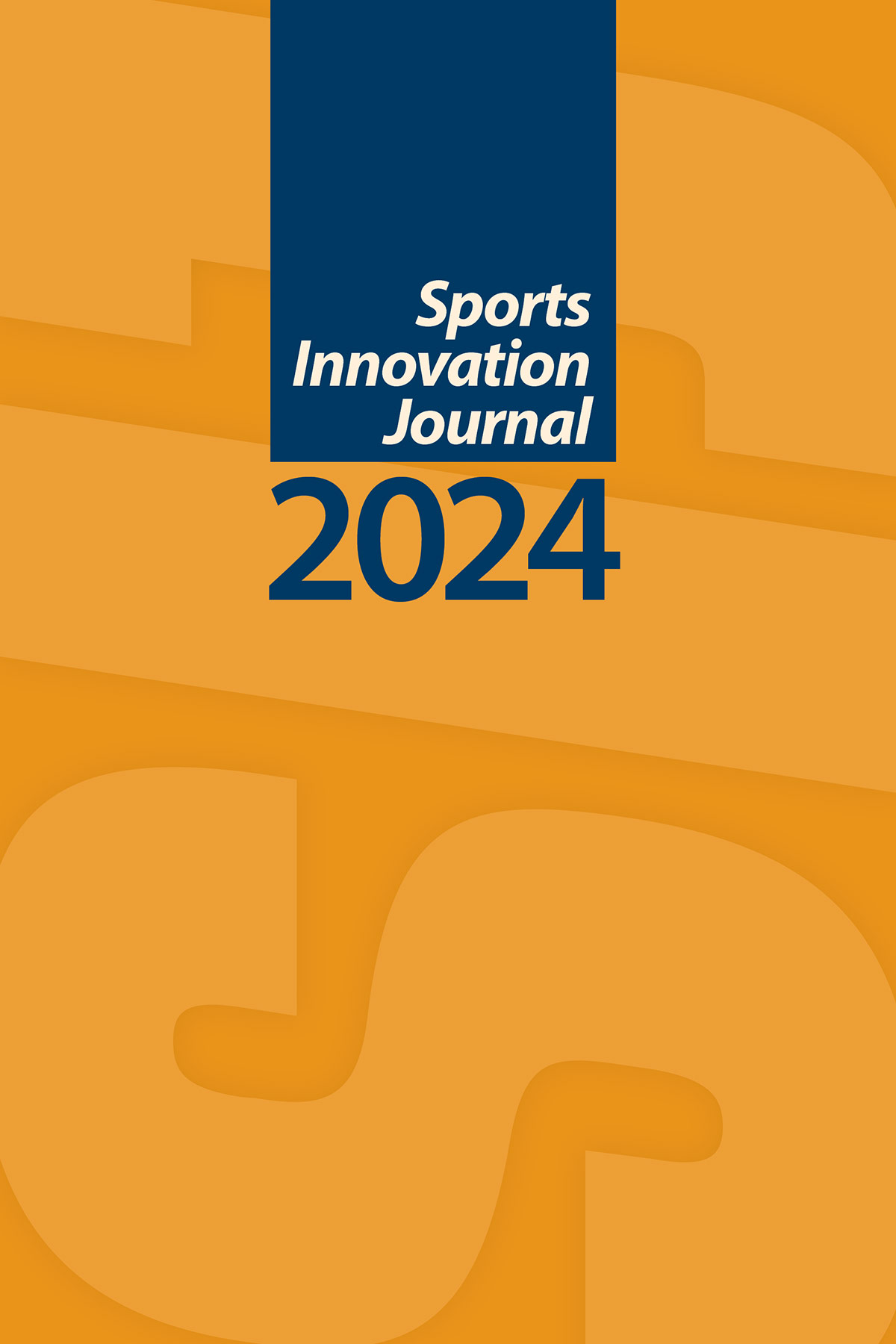Application of an Advanced Risk Analysis Evaluation Tool of Sports Integrity in an International Sports Competition
A Quantitative Case Study
DOI:
https://doi.org/10.18060/27667Keywords:
risk assessment, automated technology, voice, fraud, sport integrityAbstract
The estimated annual cost of corruption in the global sports industry is anywhere from $1.7 to $2.6 trillion (Carrillo, 2023; United Nations, 2023). Among the most common types of corruption is the involvement of sports officials in bribery, cheating, embezzlement, match manipulation, and final-result fixing. The authors describe an advanced risk assessment voice analytics tool and its use in identifying and countering the threat of corruption amid sport officials. The tool was implemented during an actual, multi-phase inquiry of amateur boxing officials at an international tournament. Of the 93 completed (pre- and post-competition) automated interviews, 77.4% resulted in risk-positive outcomes for knowledge of and/or involvement in corruption. Ground truth confirmed 80% of the risk-positive flags. In addition, statistical analyses verified the decision support tool’s unbiased model across a group of men and women from 49 different countries. Further, an association of risk-positive flags with countries’ human developmental indices—previously shown to be inversely related to corruption—provides convergent validity for the automated tool. This study’s findings contribute to the international sports integrity investigations and management literature.
References
Akcay, S. (2006). Corruption and human development. The Cato Journal, 26(1), 29-48.
https://www.researchgate.net/publication/289392968_Corruption_and_human_development
Chmait, N., & Westerbeek, H. (2021). Artificial Intelligence and machine learning in sport research: An introduction for non-data scientists. Frontiers in Sports and Active Living, 3. https://doi.org/10.3389/fspor.2021.682287
Chui, M., & Manyika J. (2018, April 25). The real-world potential and limitations of artificial
intelligence. Podcast: McKinsey & Company. https://www.mckinsey.com/featured-insights/artificial-intelligence/the-real-world-potential-and-limitations-of-artificial-intelligence
Cohen, J. (1988). Statistical Power Analysis for the behavioral sciences. L. Erlbaum Associates.
Farrow, T., Johnson, N., Hunter, M., Barker, A., Wilkinson, I., & Woodruff, P. (2013). Neural correlates of the behavioral-autonomic interaction response to potentially threatening stimuli. Frontiers in Human Neuroscience, 6(34), 1-17. https://doi.org/10.3389/fnhum.2012.00349
Feast, J. (2019, November 20). 4 ways to address gender bias in AI. Harvard Business Review.
https://hbr.org/2019/11/4-ways-to-address-gender-bias-in-ai
Feustel, E. D., & Rodenberg, R. M. (2015). Sports (betting) integrity: Detecting match-fixing in soccer. Gaming Law Review and Economics, 19(10), 689–694. https://doi.org/10.1089/glre.2015.19105
Gius, D., Mieszala, J., Panayiotou, E., & Poppensieker, T. (2018, October 1). Value and resilience through better risk management. McKinsey & Company. Retrieved March 18, 2021, from https://www.mckinsey.com/business-functions/risk-and-resilience/our-insights/value-and-resilience-through-better-risk-management
Hughes, C. (2017). The ellipsis manual: Analysis and engineering of human behavior. Evergreen Press.
International Olympic Committee. (2021, October 6). Factsheet - The Integrity Betting Intelligence System (IBIS). stillmed.olympics.com. https://stillmed.olympics.com/media/Documents/Beyond-the-Games/Factsheets/Integrity-Betting-Intelligence-System.pdf
Kihl, L. A., Skinner, J., & Engelberg, T. (2016). Corruption in sport: Understanding the complexity of corruption. European Sport Management Quarterly, 17(1), 1–5. https://doi.org/10.1080/16184742.2016.1257553
Maennig, W. (2005). Corruption in international sports and sport management: Forms, tendencies, extent and countermeasures. European Sport Management Quarterly, 5(2), 187–225. https://doi.org/10.1080/16184740500188821
McLaren, R. (2008). Corruption: Its impact on fair play. Marquette Sports Law Review, 19(1),
-38. http://scholarship.law.marquette.edu/sportslaw/vol19/iss1/3
McLaren Global Sports Solutions. (2021, October). (report). Independent investigation of the AIBA boxing competitions prior to and during the rio olympic games 2016 (pp. 1–145). Toronto, Canada.
Mendoza, E., & Carballo, G. (1998). Acoustic analysis of induced vocal stress by means of cognitive workload tasks. Journal of Voice, 12(3), 263–273. https://doi.org/10.1016/s0892-1997(98)80017-9
Meyer, M., Roodt, G., & Robbins, M. (2011). Human resources risk management: Governing people risks for improved performance. SA Journal of Human Resource Management, 9(1), 1-12. https://doi.org/10.4102/sajhrm.v9i1.366
NI Business Info. (2020). Risks and limitations of artificial intelligence in business. Retrieved December 7, 2020, from https://www.nibusinessinfo.co.uk/content/risks-and-limitations-artificial-intelligence-business
Panja, T., & Draper, K. (2020, April 6). U.S. says FIFA officials were bribed to award World Cups to Russia and Qatar. The New York Times. https://www.nytimes.com/2020/04/06/sports/soccer/qatar-and-russia-bribery-world-cup-fifa.html
Robson, C., & McCartan, K. (2016). Real World Research. Wiley.
Scherer, K. (2003). Vocal communication of emotion: A review of research paradigms. Speech Communication, 40(1-2), 227–256. https://doi.org/10.1016/s0167-6393(02)00084-5
Schneider, S. (2014). Integrity Betting Intelligence System. Gaming Law Review and Economics, 18(10), 961–962. https://doi.org/10.1089/glre.2014.18103
Shilbury, D. & Ferkins, L. (2021). Routledge Handbook of Sport Governance. Taylor and Francis.
Simon-Thomas, E., Keltner, D., Sauter, D., Sinicropi-Yao, L., & Abramson, A. (2009). The voice conveys specific emotions: Evidence from vocal burst displays. Emotion, 9(6), 838–846. https://doi.org/10.1037/a0017810
Singh, R. (2019). Profiling humans from their voice. Springer.
Suchotzki, K., Verschuere, B., Van Bockstaele, B., Ben-Shakhar, G., & Crombez, G. (2017). Lying takes time: A meta-analysis on reaction time measures of deception. Psychological Bulletin, 143(4), 428–453. https://doi.org/10.1037/bul0000087
Throckmorton, C. S., Mayew, W. J., Venkatachalam, M., & Collins, L. M. (2015). Financial fraud detection using vocal, linguistic and financial cues. Decision Support Systems, 74, 78-87. http://doi.org/10.1016/j.dss.2015.04.006
UNODC (2013). The United Nations Convention against Corruption: A Strategy for
Safeguarding against Corruption in Major Public Event. United Nations: Office on Drugs
and Crime. Retrieved on 7-7-22 from
http://www.unodc.org/documents/corruption/Publications/2013/13-84527_Ebook.pdf
UNODC (2021, June 22). Section 4: Detection and reporting corruption in Sport. United
Nations: Office on Drugs and Crime. Retrieved on 7-3-23 from
https://www.unodc.org/unodc/en/safeguardingsport/grcs/section-4.html
Van Puyvelde, M., Neyt, X., McGlone, F., & Pattyn, N. (2018). Voice stress analysis: A new framework for voice and effort in human performance. Frontiers in Psychology, 9. https://doi.org/10.3389/fpsyg.2018.01994
Van Rompuy, B. (2016). The role of the betting industry. In Global Corruption Report: Sport (1st ed., pp. 236–241). Routledge & Transparency International.
Vanwersch, L., Willem, A., Constandt, B., & Hardyns, W. (2022). A scoping review of the causes and consequences of fraud in Sport. Journal of Sport and Social Issues, 46(6), 546–584. https://doi.org/10.1177/01937235221119811
World Population Review (2022). Human development index (HDI) by country 2022. Retrieved July 5, 2022, from https://worldpopulationreview.com/country-rankings/hdi-by-country
http://biblioteca.figc.it/7562/
Zhou, L. (2023, July 22). China’s football corruption crackdown targets 2 more senior officials.
South China Morning Post. https://www.scmp.com/news/china/article/3228573/chinas-
football-corruption-crackdown-targets-2-more-senior-officials
Downloads
Published
Issue
Section
License
Copyright (c) 2024 Richard McLaren, Diana Tesic, Martin Dubbey

This work is licensed under a Creative Commons Attribution 4.0 International License.
Copyright to articles published in Sport Innovation Journal is retained by the author(s).


